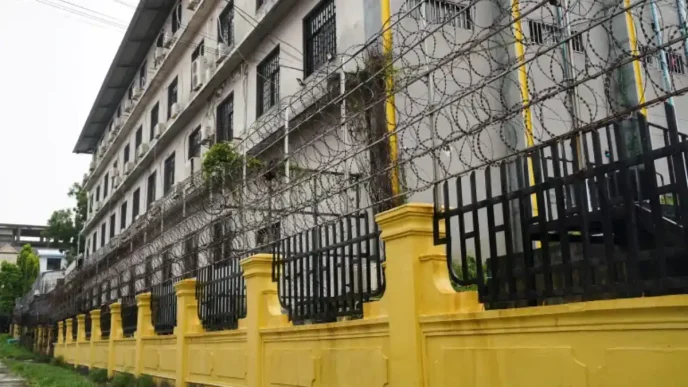Malaysia’s public healthcare system is at a crossroads in 2025, with ambitious digital reforms offering a glimmer of hope against a backdrop of systemic challenges. Health Minister Datuk Seri Dr Dzulkefly Ahmad has hailed this year as a “pivotal” moment for implementation, pointing to significant strides in reducing waiting times at primary care clinics through digitalisation. Yet, beneath the surface, government doctors and social activists paint a grimmer picture of understaffing, crumbling infrastructure, and uneven resource distribution that threaten to undermine these gains.
On 2 February, Dr Dzulkefly took to X to celebrate the expansion of digital services, noting that waiting times at major clinics had dropped from three hours to just 30 minutes. The initiative, which started with 107 clinics in 2007, now covers 159 facilities—a near 49% increase. “2025 is the year we walk the talk!” he declared. For many Malaysians, particularly those reliant on public healthcare, this progress is tangible. Digital tools have streamlined appointment systems and patient records, easing the burden on overcrowded facilities. But while the Health Minister’s optimism is well-intentioned, frontline workers argue that technology alone cannot address the deeper structural issues plaguing the system.
A System Under Strain: Voices from the Frontline
Government doctors, speaking anonymously due to professional constraints, describe a healthcare system buckling under pressure. Understaffing remains a critical issue, with one senior clinician from a northern state estimating a 30% shortage of medical personnel in the public sector. This shortfall is compounded by what he called a “flawed” distribution of staff, where some hospital departments are overstaffed while others struggle to meet basic doctor-patient ratios. “Ideally, a 40-bed ward should have five medical officers and two specialists on duty,” he explained. “But uneven distribution means some areas have more staff than needed, while others are critically short.”
The impact is stark in smaller states, where private hospital options are limited, and public facilities face rising patient volumes. In such regions, the lack of manpower often delays critical care, leaving doctors overstretched and patients vulnerable. A veteran physician, who has worked across multiple government hospitals, highlighted additional barriers, including a shortage of anaesthetists that hinders surgeries. “The situation varies across the country, with some hospitals worse off than others,” he said, “but the core issues are the same.”
Infrastructure Failures: Equipment and Essentials in Disrepair
Beyond manpower, infrastructure failures add to the crisis. Public hospitals are often as well-equipped as their private counterparts, according to one doctor, but poor maintenance undermines their capacity. He cited examples from Sabah, where ageing autoclave machines—vital for sterilising surgical tools—have broken down due to neglect. Even basic utilities are unreliable, with some facilities experiencing disruptions in water and electricity supply. “There were days when elevators didn’t work,” he recalled. “These situations are hampering healthcare services to the public.”
Overcrowding exacerbates the strain. In some wards, beds are placed so close together that privacy and comfort are compromised. Social activist Kuan Chee Heng, better known as Uncle Kentang, described the scene at Hospital Kuala Lumpur (HKL), the capital’s largest public hospital, as akin to a “war zone.” Staff, he said, barely have time for breaks amid the relentless influx of patients. Kuan, who runs a free ambulance service in the Klang Valley, urged authorities to redirect non-critical cases to health clinics, freeing up HKL for emergencies. “Volunteers like retired nurses could help,” he suggested. “We will see progress sooner if we work together. The situation is critical at this point.”
Digital Progress: A Double-Edged Sword?
The Health Ministry’s digital transformation, while promising, raises questions about prioritisation. Reducing waiting times is a significant achievement, particularly for patients who once endured long delays for basic care. The expansion to 159 clinics signals a commitment to modernisation, aligning Malaysia with global trends in healthcare technology. However, without addressing manpower shortages and infrastructure decay, digital tools risk becoming a superficial fix. A streamlined appointment system is of little use if there aren’t enough doctors to see patients or if essential equipment lies broken.
Critics also point to the urban-rural divide in accessing these digital benefits. While major clinics in cities like Petaling Jaya and Kuala Lumpur report shorter waiting times, rural areas—where internet connectivity and technological literacy may lag—could be left behind. If the initiative is to truly transform healthcare, it must be paired with efforts to bridge this gap, ensuring that all Malaysians, regardless of location, reap the rewards of innovation.
Systemic Challenges Demand Systemic Solutions
The issues facing Malaysia’s public healthcare system are not new, but they have gained urgency as patient numbers grow and resources dwindle. Uneven staff distribution, a problem acknowledged by multiple doctors, requires strategic manpower planning. Hospitals in under-served regions must be prioritised, with incentives to attract medical professionals to less desirable postings. At the same time, addressing the shortage—estimated at 30%—may involve expanding medical training programmes and streamlining recruitment processes, though such measures will take years to bear fruit.
Infrastructure woes demand immediate attention. Regular maintenance schedules for equipment, along with contingency plans for utility disruptions, could prevent the breakdowns that currently disrupt care. Overcrowding, too, must be tackled, potentially through Kuan’s suggestion of diverting non-serious cases to local clinics. Such a triage system, if implemented effectively, could ease the burden on major hospitals like HKL, allowing them to focus on critical patients.
A Political Imperative
Healthcare is inherently political, tied to public trust in government and the allocation of national resources. Dr Dzulkefly’s pledge to “walk the talk” in 2025 places pressure on the administration to deliver not just digital wins but holistic reform. Public dissatisfaction with healthcare services could fuel broader discontent, especially in a country where access to affordable medical care is seen as a fundamental right. The government’s ability to address these systemic challenges will likely shape perceptions of its competence and commitment to the rakyat (people).
Opposition voices and civil society groups are already calling for greater transparency in healthcare spending and policy-making. How funds are allocated—whether prioritising digital tools over staffing or urban centres over rural outposts—will be scrutinised. If digitalisation is perceived as a distraction from addressing core issues, the Health Ministry risks losing credibility, even as it touts shorter waiting times.
Looking Ahead: A Balancing Act
Malaysia’s healthcare crisis encapsulates a broader tension between technological advancement and systemic reform. Digitalisation offers a path to efficiency, but it cannot substitute for doctors, functioning equipment, or adequate beds. The expansion of digital services to 159 clinics is a commendable step, yet it must be matched by investment in human and physical infrastructure. Without this balance, the system risks alienating the very patients it seeks to serve.
For now, the voices of government doctors and activists like Uncle Kentang serve as a sobering reminder of the challenges ahead. Their accounts of understaffed wards, broken machines, and overwhelmed facilities contrast sharply with official narratives of progress. If 2025 is indeed to be the year Malaysia “walks the talk,” as Dr Dzulkefly promises, it will require confronting these hard truths head-on. Only then can the nation build a healthcare system that is not just digitally savvy but truly resilient—one capable of meeting the needs of all its people, from bustling Kuala Lumpur to the remotest corners of Sabah.
As the Health Minister’s words echo through X, the question remains: can Malaysia turn digital promise into lasting change, or will systemic failures continue to cast a shadow over its ambitions? The answer will define the state of public health for years to come.














